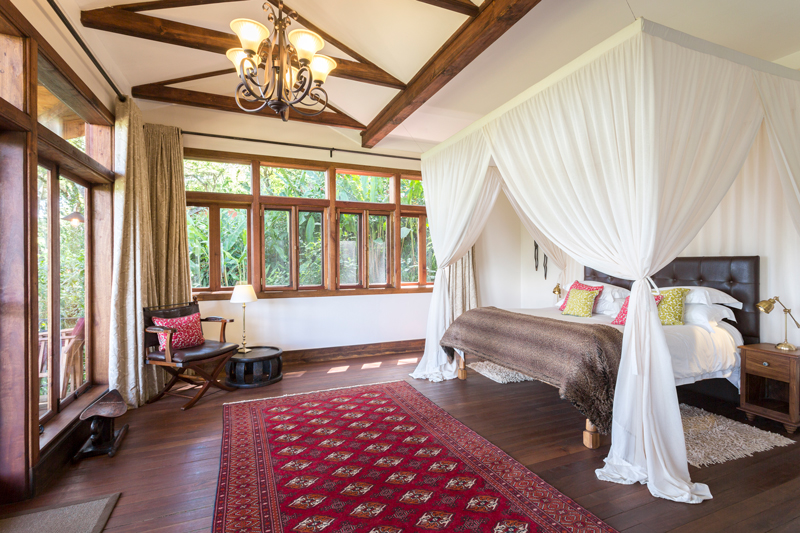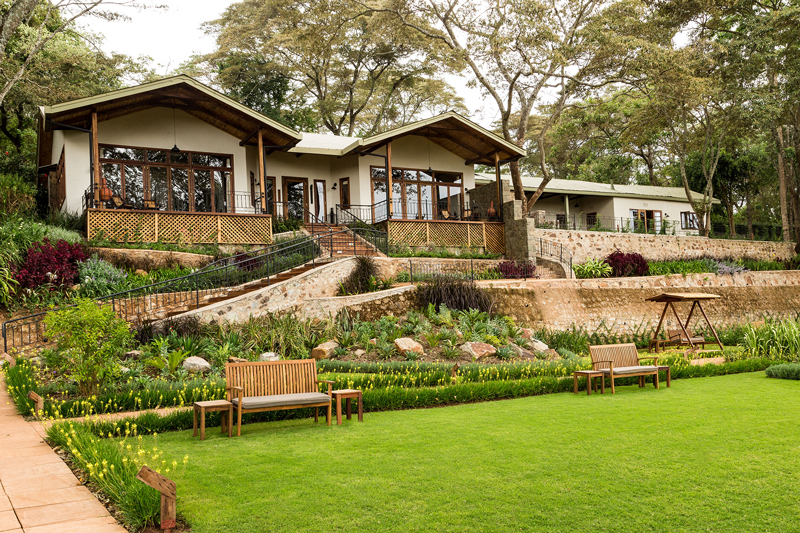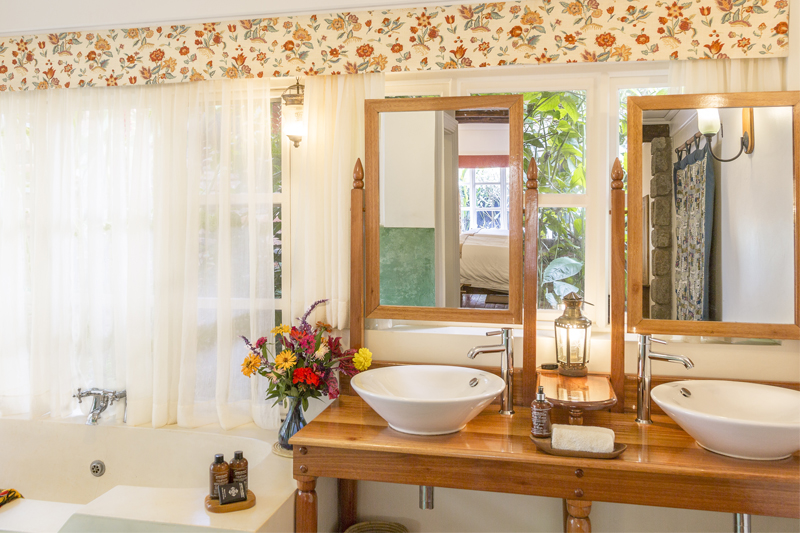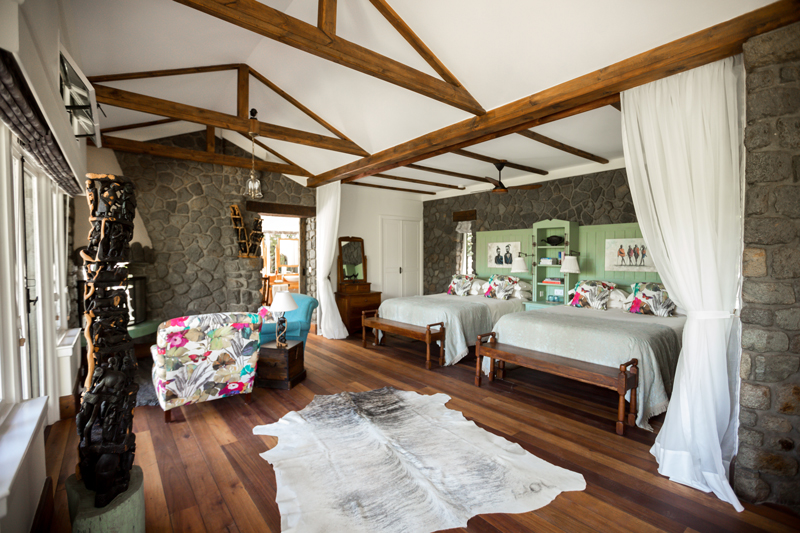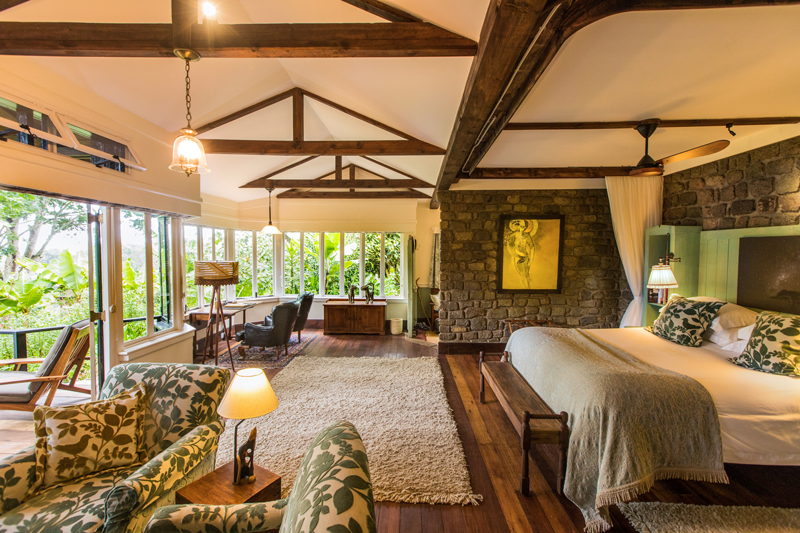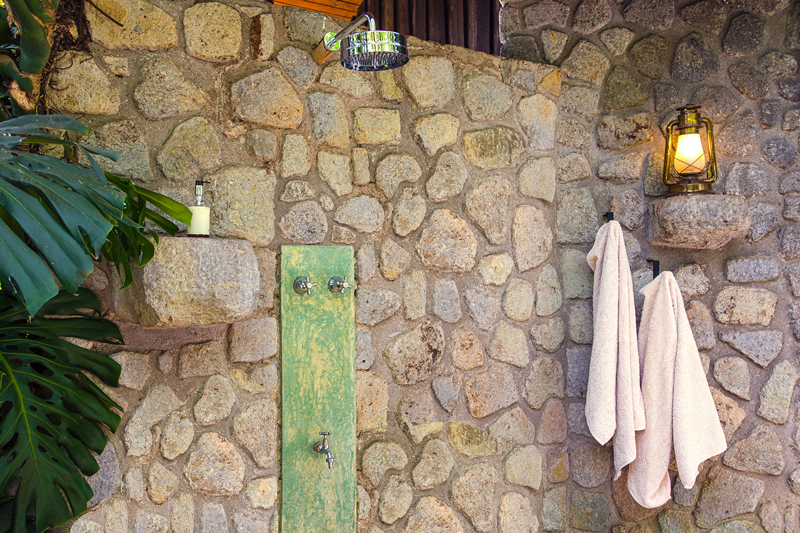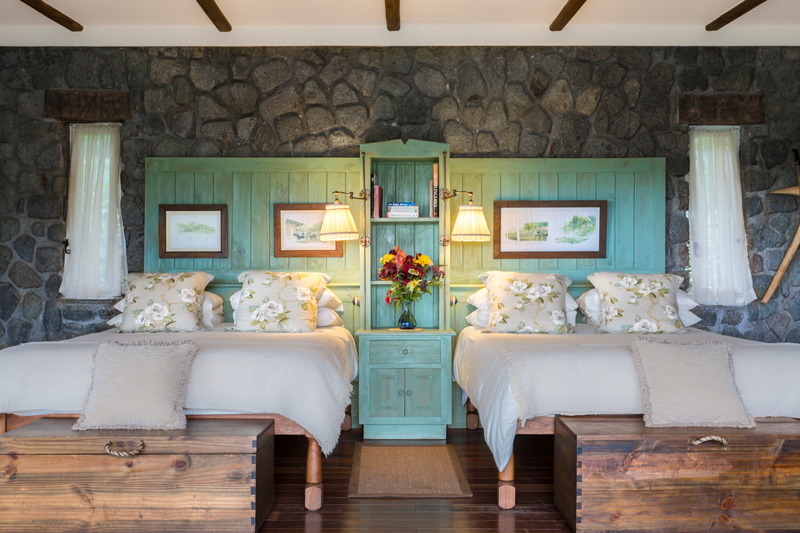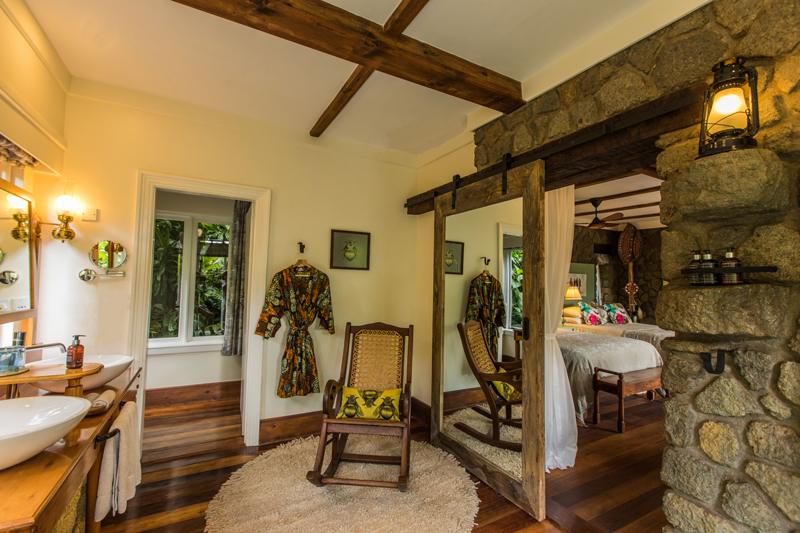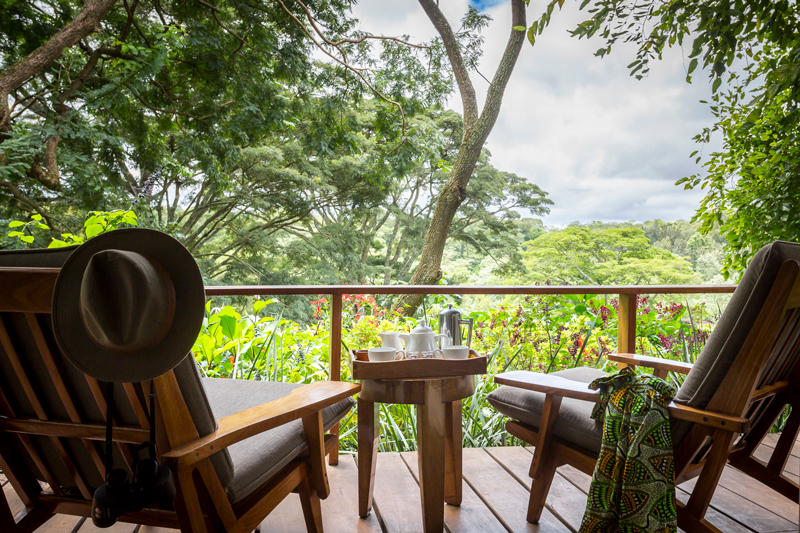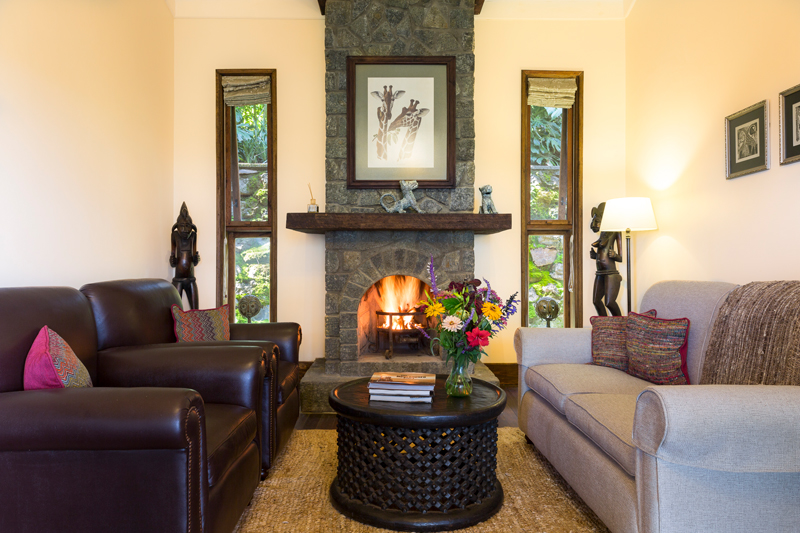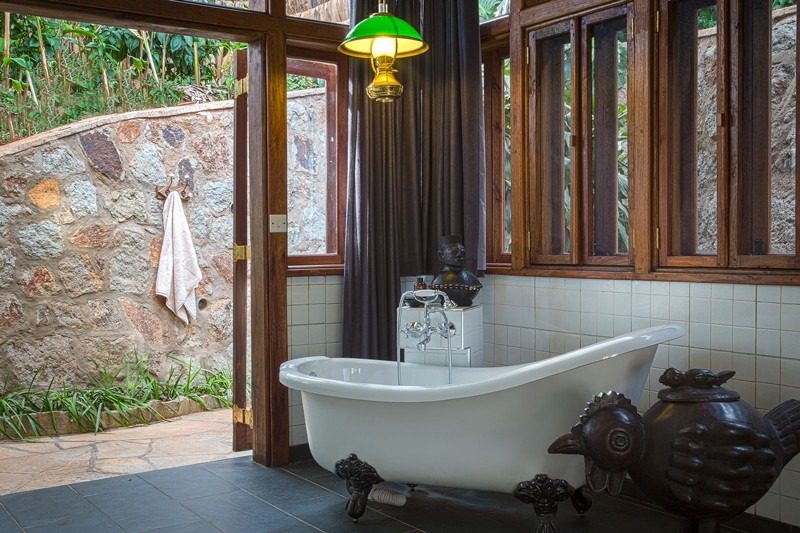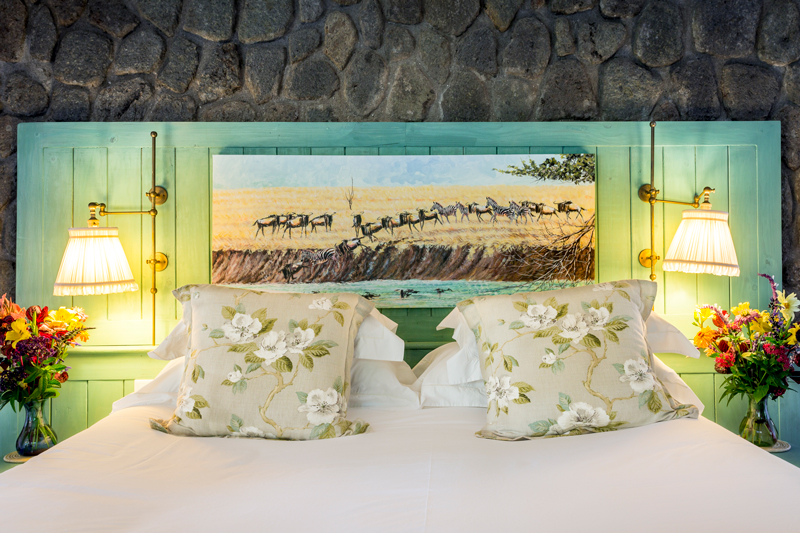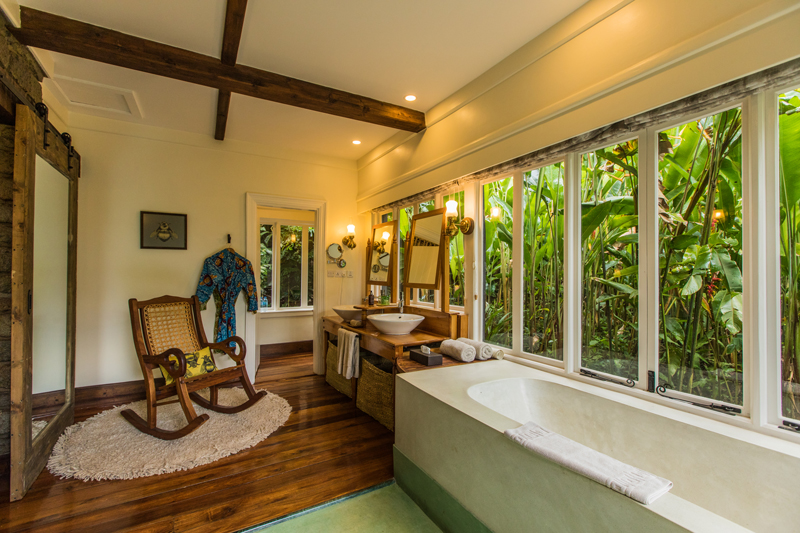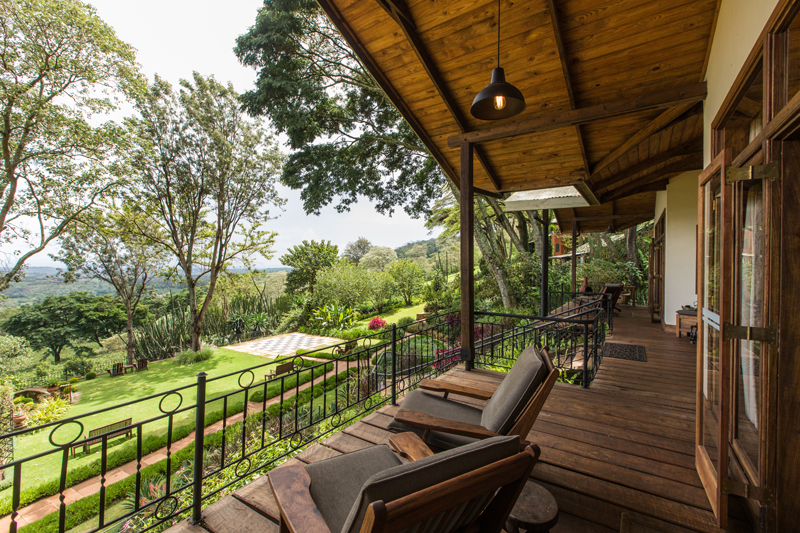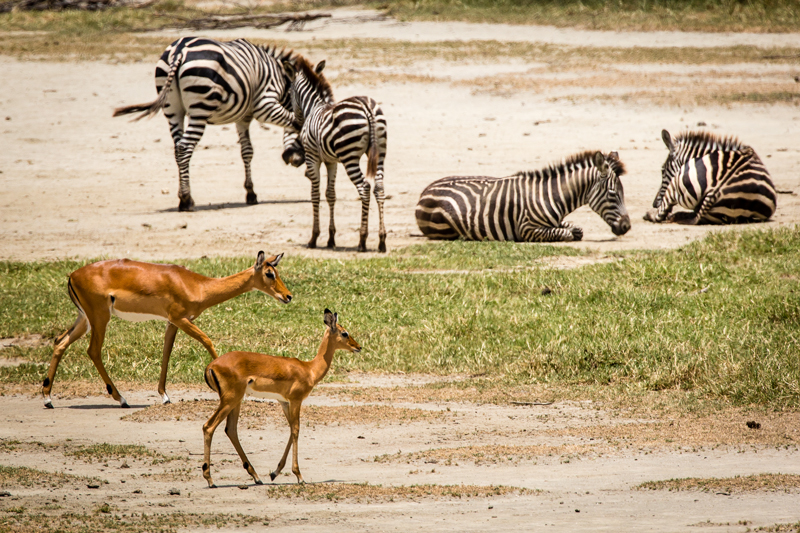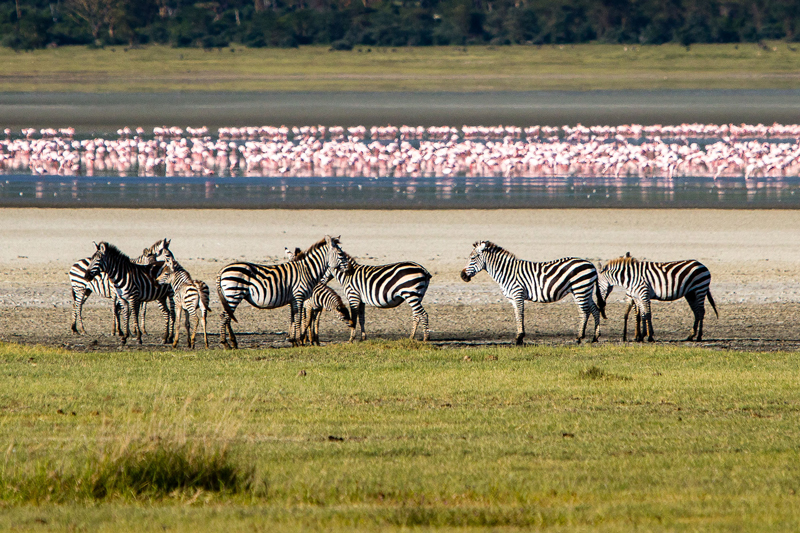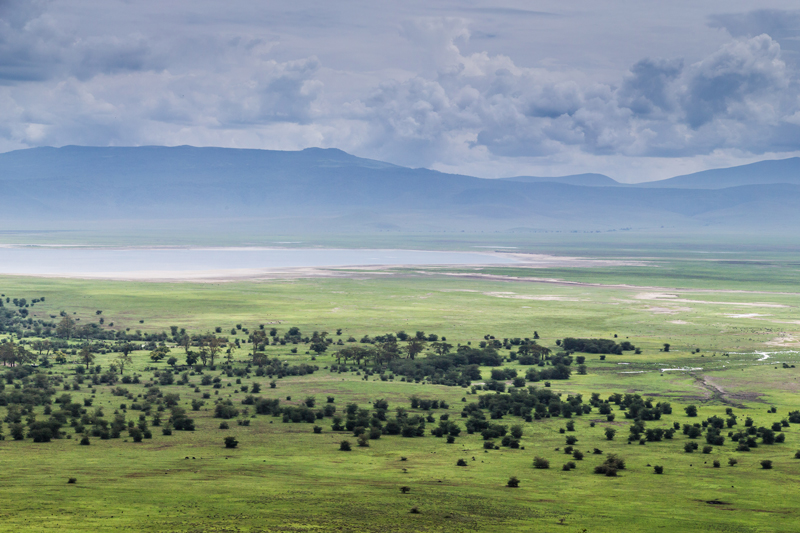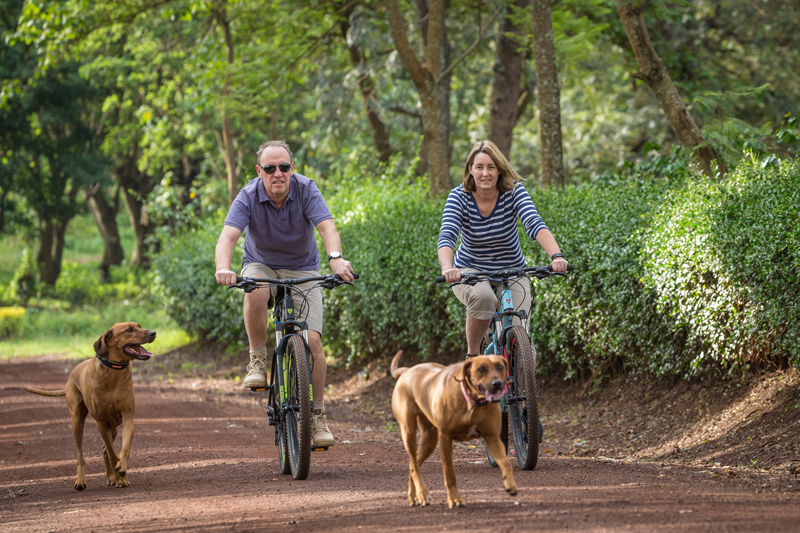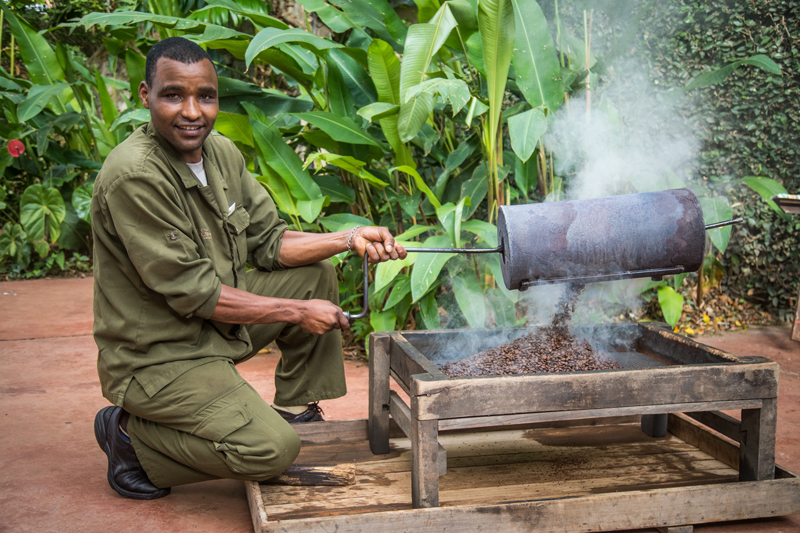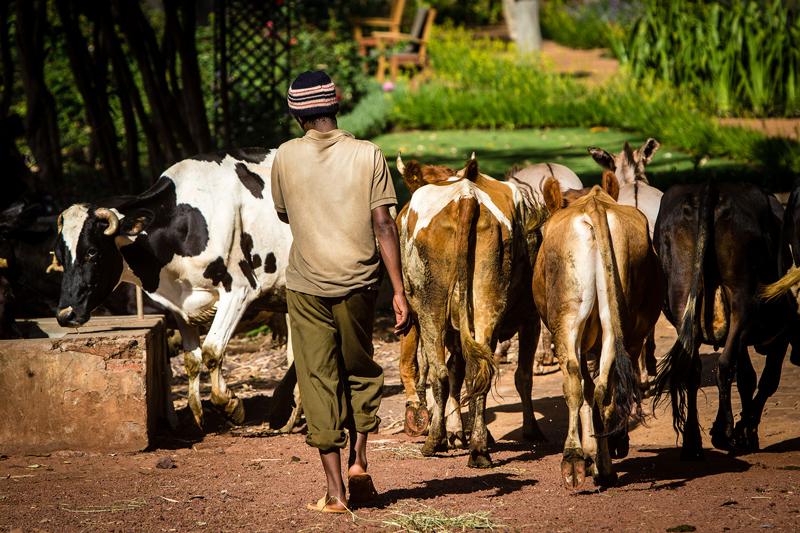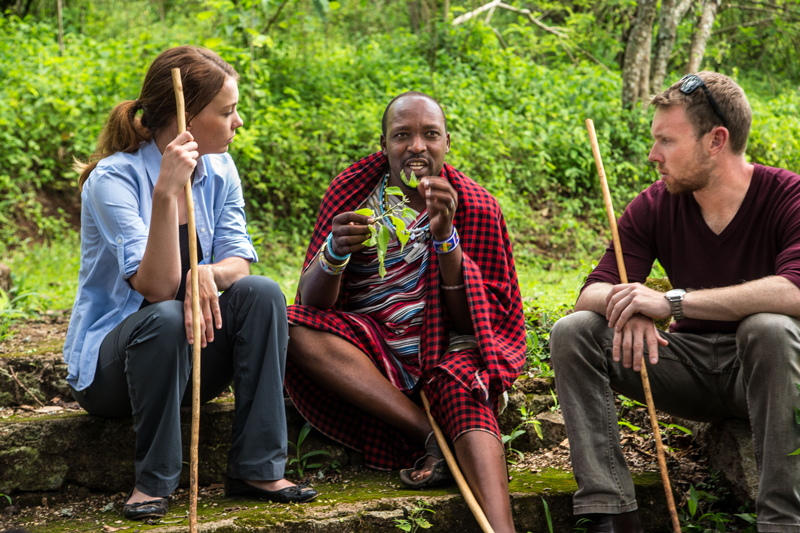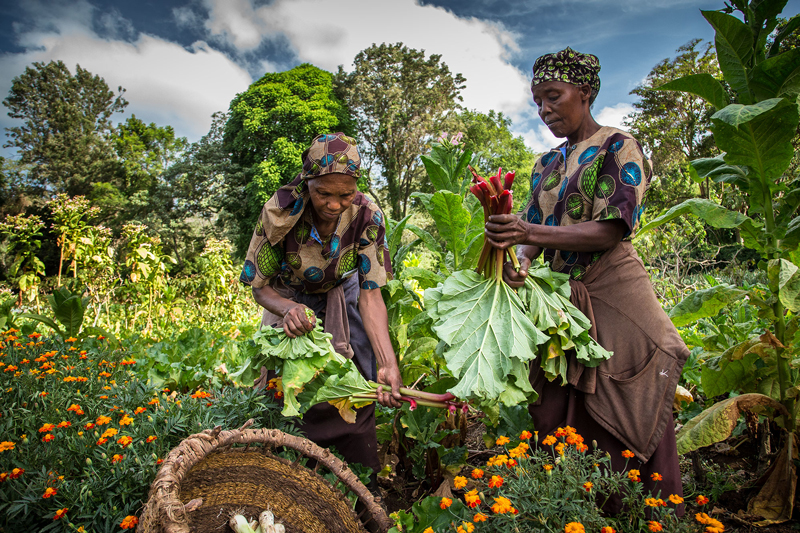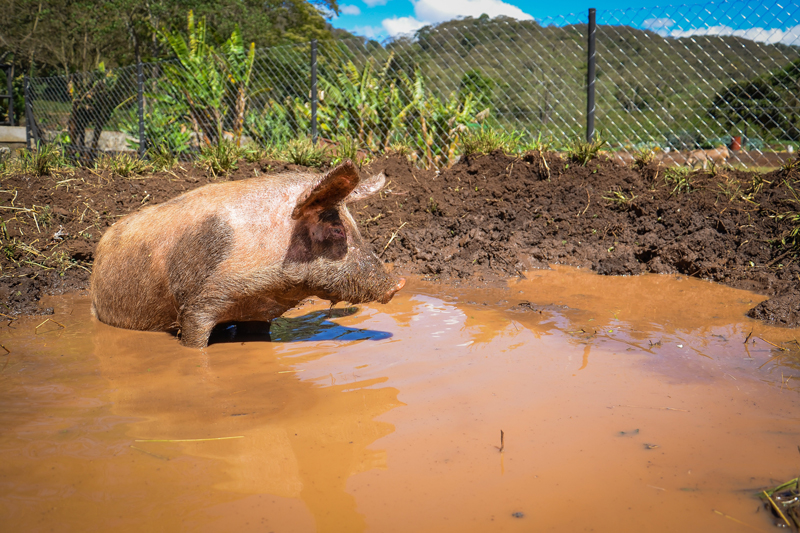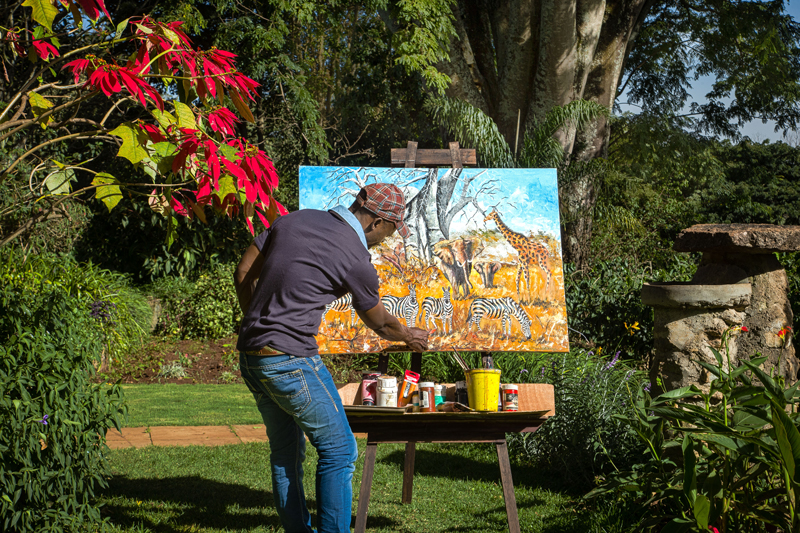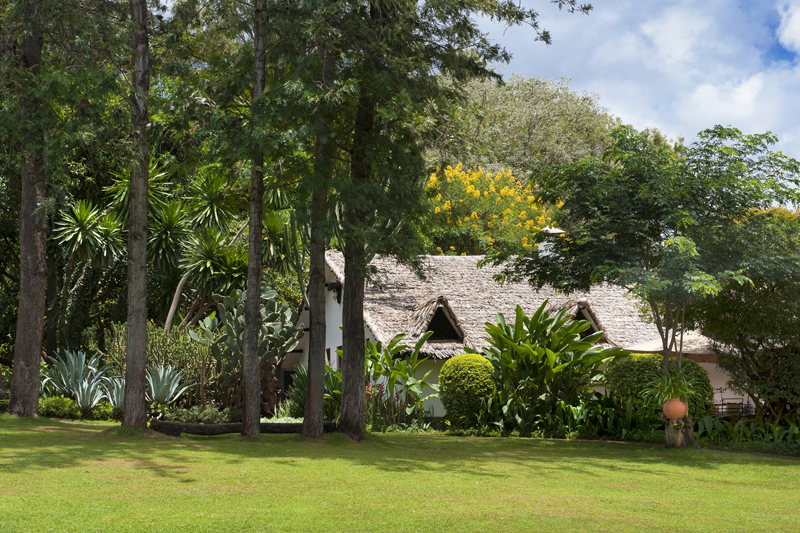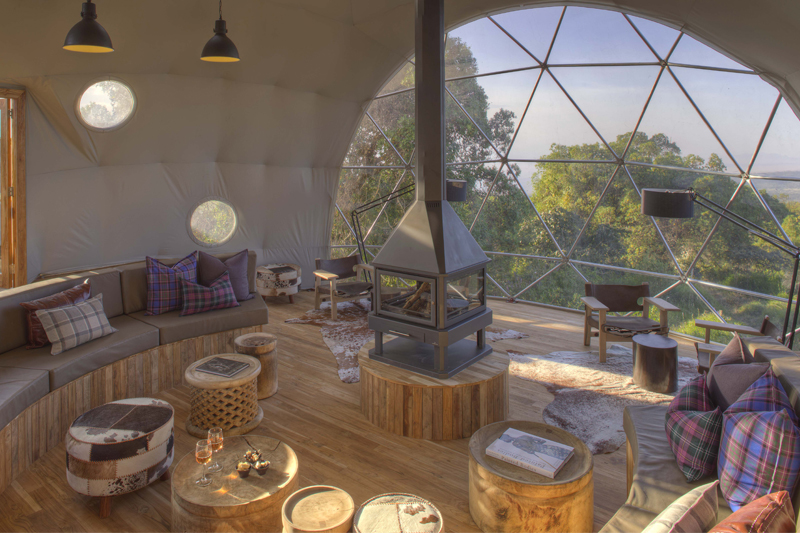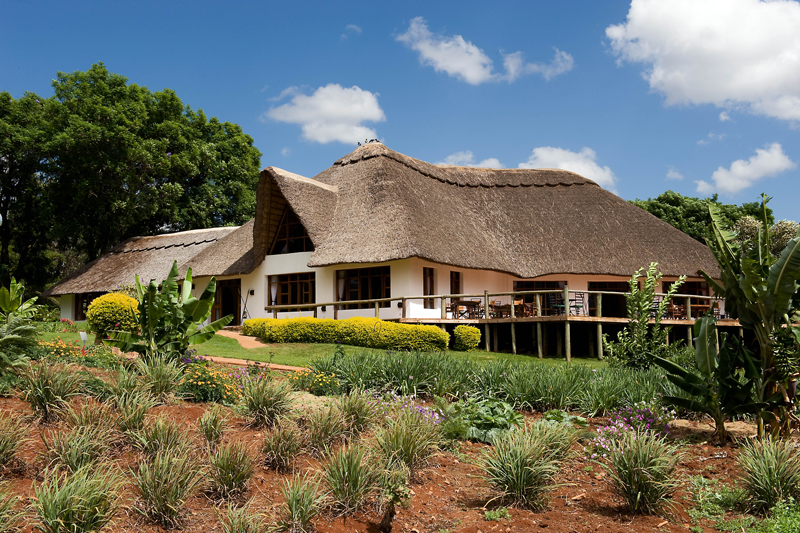Gibb’s Farm
Gibb’s Farm is an exclusive country lodge located on a working coffee plantation just outside the Ngorongoro Conservation Area near the village of Karatu in the Ngorongoro Highlands.
Gibb’s Farm is a lovely property about 30 minutes’ drive from the Ngorongoro Crater, offering high levels of comfort, good food and service and a warm welcome. It is a well-established and popular property and it is very unusual for anyone to have any issues staying there. There is a sense of ‘history’ to the place, and the staff are friendly and efficient. The location is excellent if you wish to combine seeing the Ngorongoro Crater with some walking and experiencing something of African life in the more developed Karatu region of the Ngorongoro Highlands. It is also possible to visit Lake Manyara National Park from Gibb’s Farm. Gibb’s is therefore an ideal base from which to explore the region and enjoy a variety of experiences, whilst offering a fairly luxurious and relaxing accommodation experience.
Rooms
The lodge caters for around 48 guests in a series of cottages set throughout the mature gardens. There are 17 spacious one bedroomed guest cottages with a small entrance hall leading to the large bedroom furnished with two double beds, side and dressing tables, luggage racks and easy chairs. The en suite bathrooms are to the side and include a bath, separate toilet, vanity basins and two showers, one outside. From the bedroom, a door leads out to a private furnished verandah. Each room also has a fire-place, welcome during the cold damp nights.
There are two family cottages on the farm, Bustani House and Deutches House. Bustani House has been inspired by the breath-taking view from its verandah. Two en suite bedrooms, each with an outdoor shower, as well as a private lounge are decorated with antiques and contemporary African art. Sleeping up to four adults or two adults and four children, guests enjoy the space that comes with being set apart from the other cottages. Deutsches House, named after the German Duke who founded Gibb’s Farm in the early 1900s, is a comfortable family retreat with a large private verandah. Sleeping up to four adults or two adults and four children, the house has a master en suite bedroom (king-size bed) and a second en suite bedroom (twin queen-size beds). Each bathroom has an indoor shower and bath as well as an outdoor shower. The large living area is complete with an open fireplace, comfortable arm chairs, sofa and writing desk.
Central Areas
The communal areas of the former homestead include the bar and lounge, an art gallery (where the resident artist works), a small shop, and a split level dining room overlooking the gardens. There is a wide verandah where alfresco dining takes place weather permitting. To the front of the property, there is a lawn and flower garden. There is also a swimming pool and yoga deck. The farm is situated outside the village of Karatu, in the heart of the Ngorongoro Highlands, and boasts wonderful views of the surrounding coffee plantations and southern slopes of the Ngorongoro Crater.
Facilities
Wi-Fi – Yes
Power for Charging – Yes
Swimming Pool – Yes
Habitat & Wildlife
The Ngorongoro Highlands sit on the western edge of the Great Rift Valley as it curves south-westwards from the desolate Lake Natron past Lake Manyara to the remote Lake Eyasi. These highlands are the remnants of an ancient chain of volcanoes, most of which are now entirely dormant. The only active volcano here now is Oldoinyo L’Engai, to the north of the Ngorongoro itself and at the southern end of Lake Natron. The upper highlands are home to Maasai pastoralists who live a traditional lifestyle, co-existing with the resident game.
The Ngorongoro Crater lies within the 8,000 sq. km Ngorongoro Conservation Area and is one of the natural scenic wonders of the world. The magnificent crater is a ‘caldera’ or collapsed crater which is 16-19 km in diameter with an unbroken rim. The altitude of the crater rim is around 2,250 metres, with the crater floor some 650 metres below.
The crater contains a large animal population throughout the year, including lion, leopard, cheetah (sporadic), elephant, black rhino, buffalo, hippo, hyaena, eland, zebra, giraffe, gazelle, ostrich, golden jackal, serval, African wild cat and wildebeest (wildebeest calving occurs around January). The birdlife is prolific too, with flocks of flamingos at Lake Magadi.
The Crater floor has a number of habitats – the southern side includes a number of ‘crater lakes’ and an extensive acacia woodland known as Lerai Forest, whereas to the northern side the habitat is one of open grassland. Thick montane forests cover the steep sides and rim.
Perhaps because the Ngorongoro Crater is so special, it receives a very high number of visitors and the crater floor can be subject to overcrowding particularly in the busier tourist months from July to September and at Christmas/New Year. No off-road driving is allowed and the crater is only accessible during daylight hours. There are a number of tourist lodges along the crater rim and in the surrounding highlands.
To the south of the Ngorongoro Crater the fertile land is used heavily for farming crops and coffee. Around the village of Karatu there are various good tourists lodges which offer easy access to the crater, as well further afield to Lake Manyara and Lake Eyasi.
Lake Manyara National Park lies in the Great Rift Valley at the foot of the Ngorongoro Highlands. The 325 sq. km park has a charm which is completely different from other wildlife areas. The terrain consists of five distinct vegetational zones: groundwater forest with towering mahogany and fig trees, grassy glades, extensive marshland reeds, parkland scattered with acacia trees and the scrubland of the 305m high Rift Valley wall, plus the 230 sq. km lake itself. Manyara has a high-density population of elephant, particularly young calves. The lions are known for their ‘tree-climbing’ habits, but they are not always easy to locate. Other animals to be found include buffalo, giraffe, leopard, zebra, bushbuck, reedbuck, waterbuck, impala, gazelle, baboon and both vervet and blue monkey. Near the hot springs, klipspringer can be observed on the rocky outcrops. Vast numbers of (migratory) water birds can be seen, particularly flamingo, pelican, stork, sacred ibis, grebe and cormorant, when the lake if full. In recent years however, this has only occurred during the rains and for a short time thereafter. The total number of bird species is in excess of 350.
Activities
Gibb’s Farm offers a base from which to visit both Lake Manyara National Park and the Ngorongoro Crater. Whilst visiting Lake Manyara can remain very flexible (often guests will visit Manyara en route to Gibb’s from Arusha or Tarangire), the visit to Ngorongoro Crater requires a full day and an early start. Departing Gibbs Farm in the morning, the vehicle would enter the Ngorongoro Conservation Area and then ascend up to and around the crater rim before entering the crater for game viewing – Gibb’s Farm can provide a vehicle and guide when required. Closer to Gibb’s Farm, guests can visit the local villages and explore the town of Karatu by bicycle (subject to availability). There are a number of walks also available including those around the farm. It’s possible to take a guided forest walk where guests will discover waterfalls and ‘elephant caves’. As the farm produces its own organic vegetables, a walk through the extensive vegetable patch is also possible. Guided by a Gibb’s Farm naturalist and rangers from Ngorongoro Conservation Area, guests can book a six to seven hour wilderness walk. Starting at Gibb’s Farm, you hike to the Ngorongoro Forest and ascend the slopes to the crater rim with magnificent views of the crater floor below. Massages and therapies, in ‘Maasai style’, are also available.
Seasons
Gibb’s Farm is open all year round, though it is best to visit the Ngorongoro Highlands between December and March, or from June to October.
Gibb’s Farm accepts children of all ages. Their family houses are very suitable and there are a variety of farm activities for them to enjoy during their stay. However, it is worth noting that the day trip to Ngorongoro Crater is quite a long day in the vehicle for young children.
Gibb’s Farm operates an entire organic farm – consisting of 30 acres of coffee, 10 acres of vegetables and fruit, 5 acres of flowers and herbs and a working dairy, pig and chicken farm – is based upon sustainable farming methods. Everything is grown organically using only natural fertilizer and compost from the farm. Insect-repellent plants help to manage pests, rather than harmful pesticides. Reclaimed water is used whenever possible, and all buildings and furniture are built on site using local materials and local labour.
Gibb’s Farm claims to have the largest solar panel array in Northern Tanzania heating 90% of the farm’s water. 100% of grey water is recycled into the organic farm and garden via a reed plant filtration system. All kitchen and food waste are either fed to the farm pigs or composted for use in the gardens. Glass bottles are stored in bulk and donated to various causes, such as a small NGO where handicapped artisans recycle the glass to make jewellery.
Through their Helping Hands Safari, Gibbs Farm offers different opportunities for guests to get involved, support the people and learn about the culture of the communities (including School Desk and Furniture Carpentry and Erosion Control Tree Planting). The Donate a Desk programme offers guests the chance to donate a school desk, have their message engraved upon it and then deliver it to the school personally. They may also assist the carpenters in the workshop to produce furniture required by the schools which is then distributed through the Karatu Education Fund. The fee for this activity benefits the local communities.
Tloma village, nearby to Gibb’s Farm, is supported by a fee paid by guests who chose to visit the village and experience the Iraqw culture.
Gibb’s Farm are members of Pack For A Purpose which allows guests to bring supplies for schools or medicinal clinics in their community.



